Strand7 Software: In Detail: Elements: Beam Attributes
Beam attributes
Strand7 beam elements, support the following attributes:
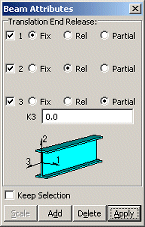 |
End-releases may be assigned to either or both ends of a beam. There are two release options: full and partial release. Full release models a pinned connection in the specified direction. Partial release models an additional spring, of the specified stiffness connected between the end of the beam and the node. Both translational and rotational degrees of freedom may be released. |
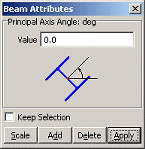 |
Local angles provide a simple way to orientate the beam axes by defining an angle in degrees. The angles may be assigned manually or automatically by using one of the beam align tools. |
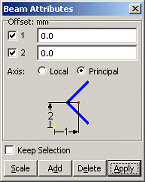 |
Offsets may be applied in either the principal directions or the local directions. The local offsets are particularly useful when used with angles, Z-sections and arbitrary user-defined sections. Commonly used offsets are easily applied to any beam section by using the automatic beam offsets tool. |
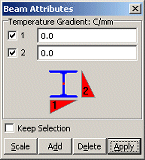 |
Temperature gradients may be assigned in the principal axes directions. They model the effect of a temperature difference between different surfaces of a beam. |
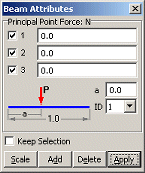 |
Point forces and moments may be applied at any position along the beam, without the need to create a node there. The load may be orientated with respect to the principal beam axes, the global coordinate system or a user-defined coordinate system. |
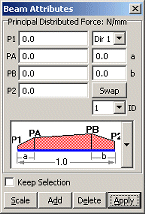 |
Distributed loads may be assigned in the directions of the principal beam axes or the global coordinate system. The loads may act over the whole length of the beam or a partial length. They may be constant or linearly-varying. For loads that are directed in the global coordinate system, the Act on Projected Length attribute may be used to apply the load over the projection of the beam, onto the specified plane, which is very useful for modelling the effect of loads such as snow loads. |
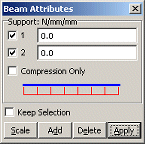 |
Elastic supports are used for modelling beams on elastic foundations. The support attribute can also be used as a compression-only support in nonlinear analysis. |
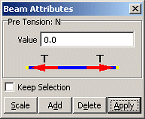 |
Pre-tension or pre-strain is used to define an initial tensile or compressive load in the beam. |
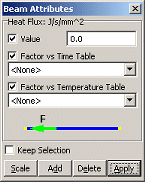 |
Thermal flux is relevant to heat transfer analysis and defines a flux value at the end of the beam. |
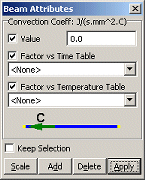 |
Convection and radiation coefficients are used in heat transfer analysis for exchanging heat between the beam and an external source. In nonlinear heat transfer analysis, the coefficients may be a function of temperature. The ambient temperature of the external source may be a function of time in transient heat analysis. |
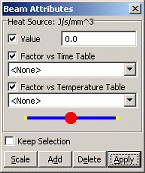 |
Heat source attributes provide a mechanism for the generation of thermal energy within the beam element. For steady heat analysis, the heat source is constant. For transient heat analysis, the heat source may be a function of time. In nonlinear heat transfer analysis, the heat source may be a function of temperature. |
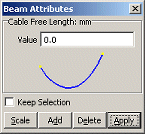 |
Cable Length is assigned to cable elements based on a Catenary formulation. This means that the cable length can be greater than the distance between the nodes at the endpoints. The cable will then deflect or sag into a catenary shape under the action of gravity. If the cable is assigned a length shorter than the distance between the nodes then the cable will be straight with an initial pre-tension. |
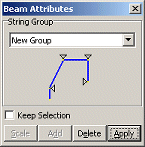 |
String Group. A string group attribute can be applied to a series of connected truss elements. The elements in a string group can be used to simulate a situation like a rope passing through a number of frictionless pulleys connected to the structure. |
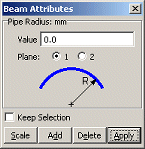 |
Pipe Radius. Pipe elements can be curved to a circular arc by assigning a radius. The radius may be applied in either Plane 1 or Plane 2 of the pipe element. |
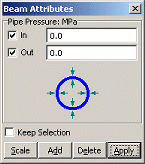 |
Pipe Pressure. An internal or external pressure can be applied that is constant along the length and around the internal or external surface of the pipe. |
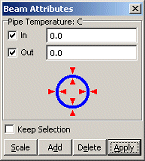 |
Pipe Temperature. A temperature can be applied that is constant along the length and around the inner or outer surface of the pipe. Setting this attribute and defining a coefficient of thermal expansion for the pipe property will produce a thermal strain. |

 Menu
Menu